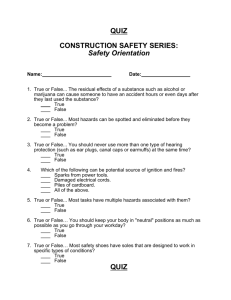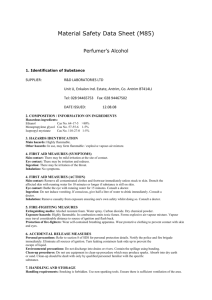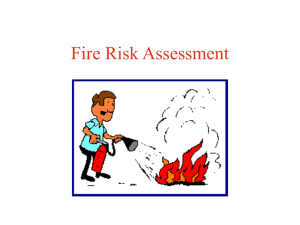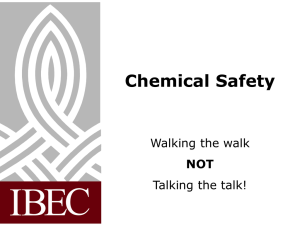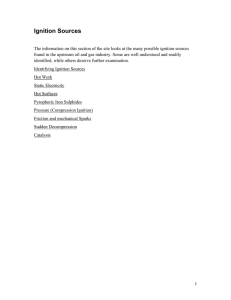Fire protection measures prevent fire from happening.
advertisement
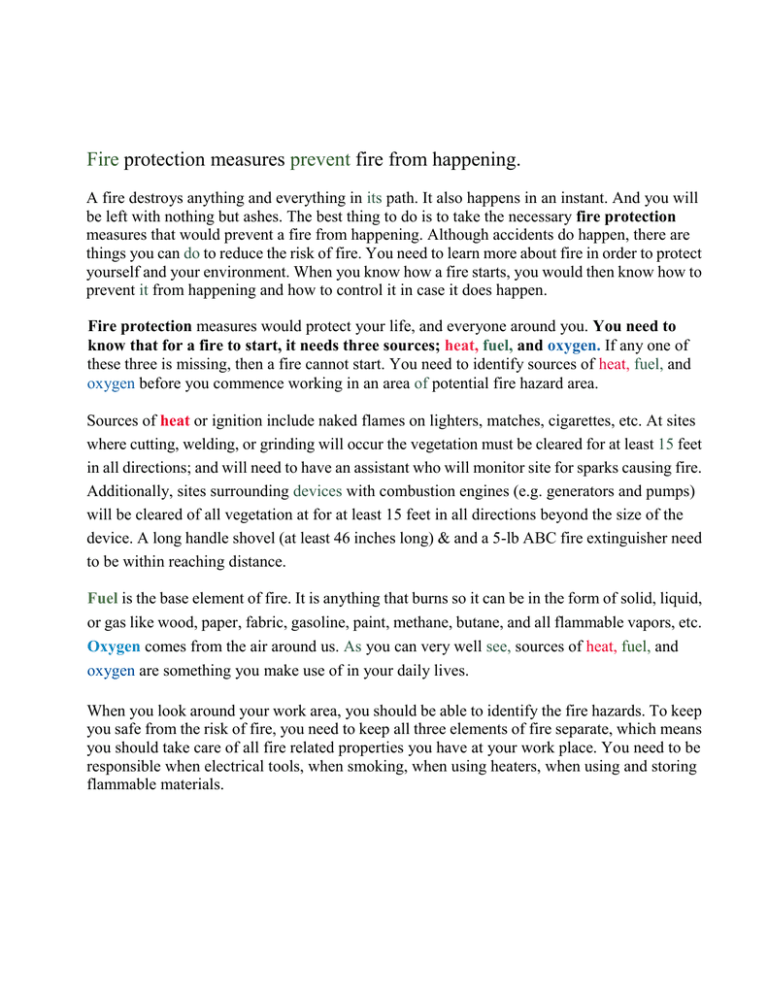
Fire protection measures prevent fire from happening. A fire destroys anything and everything in its path. It also happens in an instant. And you will be left with nothing but ashes. The best thing to do is to take the necessary fire protection measures that would prevent a fire from happening. Although accidents do happen, there are things you can do to reduce the risk of fire. You need to learn more about fire in order to protect yourself and your environment. When you know how a fire starts, you would then know how to prevent it from happening and how to control it in case it does happen. Fire protection measures would protect your life, and everyone around you. You need to know that for a fire to start, it needs three sources; heat, fuel, and oxygen. If any one of these three is missing, then a fire cannot start. You need to identify sources of heat, fuel, and oxygen before you commence working in an area of potential fire hazard area. Sources of heat or ignition include naked flames on lighters, matches, cigarettes, etc. At sites where cutting, welding, or grinding will occur the vegetation must be cleared for at least 15 feet in all directions; and will need to have an assistant who will monitor site for sparks causing fire. Additionally, sites surrounding devices with combustion engines (e.g. generators and pumps) will be cleared of all vegetation at for at least 15 feet in all directions beyond the size of the device. A long handle shovel (at least 46 inches long) & and a 5-lb ABC fire extinguisher need to be within reaching distance. Fuel is the base element of fire. It is anything that burns so it can be in the form of solid, liquid, or gas like wood, paper, fabric, gasoline, paint, methane, butane, and all flammable vapors, etc. Oxygen comes from the air around us. As you can very well see, sources of heat, fuel, and oxygen are something you make use of in your daily lives. When you look around your work area, you should be able to identify the fire hazards. To keep you safe from the risk of fire, you need to keep all three elements of fire separate, which means you should take care of all fire related properties you have at your work place. You need to be responsible when electrical tools, when smoking, when using heaters, when using and storing flammable materials. FIRE PREVENTION BASICS Fire Prevention involves elimination or control of conditions or substances that could ignite or fuel a fire. Maintenance of a clean and orderly workplace is an essential element of fire prevention. Every employer should routinely inspect the workplace to identify fire ignition and fuel hazards and then take appropriate steps to eliminate them. Fire ignition hazards include open flames, some chemical agents, sparks, and heat producing equipment or materials. Electrical systems and equipment, including wiring and switches, are major sources of fire ignition sparks or heating hazards. Overloaded, damaged or flawed electrical circuits generate heat in wiring that can reach a temperature sufficient to ignite adjacent materials. Welding, cutting and grinding operations can produce sparks that can ignite materials, gases or flammable liquids in the work area. Certain materials generate heat from inherent chemical decomposition processes and if accumulated to critical mass can generate enough internal heat to spontaneously combust. Sawdust debris accumulations, oily rags in open containers and grain storage areas are particularly susceptible to spontaneous combustion. Special care is needed to avoid or control such hazards. Open containers of flammable liquids can generate evaporative gases that flow through or accumulate in enclosed areas to reach a flame or spark that can cause explosive ignition leading back to the flammable liquid source. Uncontrolled smoking and careless disposal of tobacco smoking wastes is a major hazard and the ignition source for many workplace fires. VIGILANCE, ACTION AND COOPERATION NEEDED Effective fire prevention requires vigilance, action and cooperation. Vigilance involves regular inspection of the workplace to identity fire hazards. Action is necessary to correct hazardous situations by cleaning up debris, by installing effective storage and ventilation Systems for hazardous materials that could ignite or fuel a fire, by establishing and enforcing work rules and maintenance policies that prevent hazardous situations from arising, by shielding or ventilating heat sources, and by repairing or replacing faulty equipment or electrical systems. Cooperation between employers and employees is necessary to ensure understanding of your common interests in fire prevention and to ensure maximum effort by all concerned to see and correct fire hazards.


